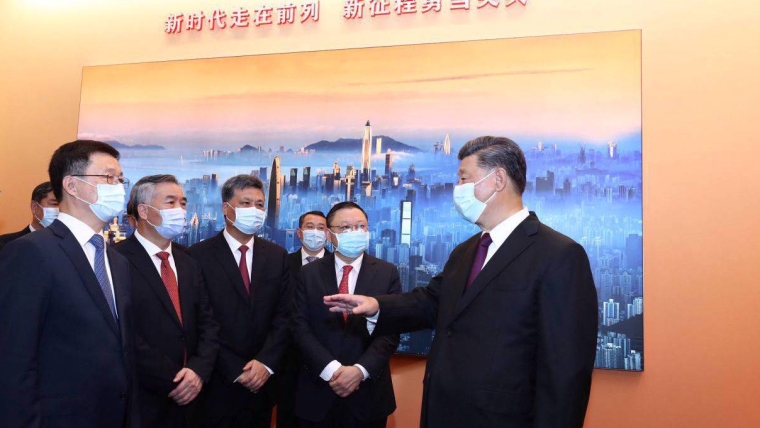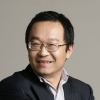
On October 14, Chinese President Xi Jinping visited the southern city of Shenzhen, where he delivered a speech celebrating 40 years of progress since the special economic zone (SEZ) was established there and set a path for the future. A month later, Xi headed to Shanghai’s Pudong district – which was designated China’s first “new area” 30 years earlier – for the same purpose. The centrality of Shenzhen and Shanghai to China’s future development could not be clearer.
When China first created the Shenzhen SEZ, some questioned its judgment. For example, as a postgraduate student at the University of Cambridge in the 1980s, James Kai-sing Kung, now of the University of Hong Kong, asked why the government would choose an unknown village like Shenzhen, rather than an economic centre like Shanghai or Tianjin, to serve as an incubator for Deng Xiaoping’s “reform and opening up” strategy.
The decision must, Kung concluded, be politically motivated; China’s government must have been preparing for the return of neighbouring Hong Kong, which was already a global financial centre. But, while it is true that sovereignty over Hong Kong was formally transferred back to China in 1997, Hong Kong’s impact on Shenzhen’s development was rooted less in sovereignty than in proximity.
If presented with an aerial view of Shenzhen’s Futian District and Hong Kong’s New Territories today, the latter areas, south of the Shenzhen River, would appear desolate. Meanwhile, Shenzhen, with its bustling ports and glittering skyline, is clearly populated and prosperous.
This is not to say that other areas of Hong Kong aren’t flourishing. In fact, that is the point. Shenzhen’s development along the border with Hong Kong reflects the so-called urban pileup effect: the accumulation of densely urbanized clusters along the frontier with a more developed area, enabling the less developed region to seize cross-border spillover opportunities.
The same phenomenon can be seen along the border between Mexico and Texas. An aerial view of the region would reveal sprawling suburbs on the wealthier American side – making it appear almost barren – and dynamic, populous cities on the Mexican side, where local workers flock to jobs at American-owned manufacturing plants, among other opportunities.
As Deng predicted, Hong Kong, with its developed financial system and economic dynamism, has had similarly powerful spillover effects on Shenzhen. The result is a thriving metropolis, where annual economic output will soon reach CN¥3 trillion ($456 billion) – one-third of the Guangdong province’s total.
Shenzhen is thus a major engine of the Greater Bay Area, which covers nine cities around the Pearl River Delta in Guangdong province, plus Hong Kong and Macau. The region already accounts for about 13% of mainland China’s GDP, and its share is growing.
Shanghai’s geographical location – on China’s east coast, near the mouth of the Yangtze River – has been similarly crucial to its success. Yet, far from piggybacking on the dynamism of a neighbour, Shanghai has always led the development of the Yangtze River Delta region, and has been the beating heart of the Yangtze River Economic Belt – which covers nine provinces and two megacities – since the belt’s launch in 2016.
In the last 30 years, growth in the Pudong new area has reinforced Shanghai’s regional primacy, while also driving development in an increasingly integrated Yangtze River Delta. Today, the Yangtze River Economic Belt accounts for more than 46% of China’s total output. This region, together with the Greater Bay Area, constitutes about 60% of China’s total output.
So, Shanghai and Shenzhen are both vital to China’s economic future. But neither is more important than the other; each has a unique role to play.
As the more mature and developed player, Shanghai has long been a leader in equipment manufacturing. Yet its economic structure is far from stationary: the city is now being transformed into a research and development hub and a centre of trade, finance, and modern services.
Shenzhen, for its part, is on track to become China’s Silicon Valley. In the last 20 years, this young, dynamic city has outpaced Shanghai in hard-technology development, with dozens of world-renowned companies – including Huawei, Tencent, Ping An, DJI, BYD, and SF Express – concentrating there.
To be sure, in terms of overall technological prowess, Shanghai still ranks first. But, rather than replacing Shanghai in the areas where it leads, Shenzhen is becoming a kind of laboratory for experimentation, not only with technology, but also with policies that incentivize and facilitate innovation. Shanghai cannot play that role, because it must continue to serve as a predictable environment for global trade and finance.
Guiding the development of an economy as large and diverse as China will always be a difficult challenge. But, by recognizing and investing in the strengths of pioneering cities and regions, China has developed a powerful mechanism for organising and advancing its economic transformation. Judging by the tremendous success of Shenzhen and Shanghai, it seems clear that China will continue to reap the rewards of this approach for decades to come.
Zhang Jun is Dean of the School of Economics at Fudan University and Director of the China Center for Economic Studies, a Shanghai-based think-tank. Copyright 2020 Project Syndicate, here with permission.
10 Comments
衷心祝愿嫦娥五号登月返回任务圆满成功!
I sincerely wish the return mission of Chang'e 5 to the moon a complete success!
China desperately wants to be the new world power. Taking the title away from the US, and ushering in a new period akin to the Qing dynasty. But they'll never be fit for this purpose with their current government unfortunately. Xi Jinping is Joseph Stalin in drag.
Chang'e 5... only 51 years later..
西京屏长得像小熊维尼
小熊维尼,小熊维尼
胖乎乎的小笨蛋都塞满了绒毛
他是小熊维尼,小熊维尼
威利,妮莉,傻老熊
Wonderful marvellous. All is good and charging ahead in advancing China where all comments are freely made and all stats issued are credible. Giving space to pure propaganda again
Sure is interesting that Interest is running propaganda straight from the Chinese printing press. FYI the author is the Chinese ambassador to the united Nations https://en.wikipedia.org/wiki/Zhang_Jun_(ambassador).
And this is how the Chinese delegate behave when they don't like what you are talking about, they have a tantrum:
https://unwatch.org/china-attempts-to-shut-down-criticism-by-hillel-neu…
Sorry accidental report. Here, here - it does seem mildly outrageous that interest would publish this without some disclaimer that it came direct from the Chinese Government!
Who knows with complex ownership structure of media companies nowadays. Until one stop-over at Hong Kong airport and asked to go to a room for a private conversation..
1984 in 2020

We welcome your comments below. If you are not already registered, please register to comment.
Remember we welcome robust, respectful and insightful debate. We don't welcome abusive or defamatory comments and will de-register those repeatedly making such comments. Our current comment policy is here.